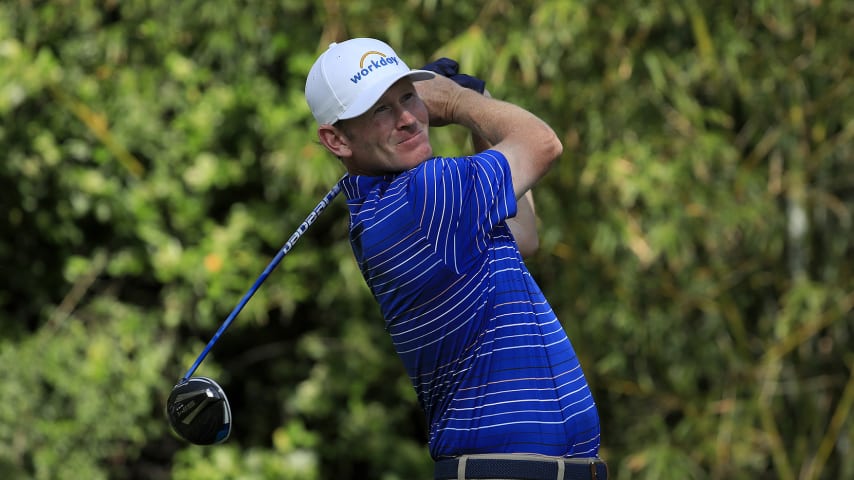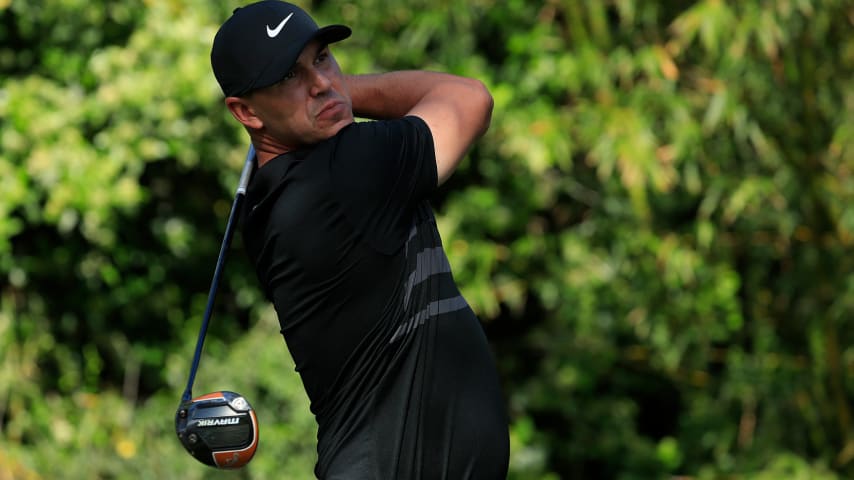Big break: How long layoffs impact players
3 Min Read

PONTE VEDRA BEACH, FLORIDA - MARCH 12: Brandt Snedeker of the United States watches his drive on the 11th hole during the first round of The PLAYERS Championship on The Stadium Course at TPC Sawgrass on March 12, 2020 in Ponte Vedra Beach, Florida. (Photo by Cliff Hawkins/Getty Images)
Written by Dylan Beirne
We are less than three weeks away from the PGA TOUR’s official return at the Charles Schwab Challenge. More than 90 days will have passed between the cancellation of THE PLAYERS and the TOUR’s resumption of play.
When THE PLAYERS was canceled back in March, a cloud of uncertainty was hanging over golf and the world around it.
Nobody knew when we would see the world’s best tee it up again, but both players and fans were certainly hoping it would be safe to do so sooner than later.
We now have a clear schedule for the remainder of the year, with competition resuming 13 weeks after the THE PLAYERS was canceled. Let’s explore what impact this break might have on player performance.
Needless to say, 13-week breaks are not common among PGA TOUR players. Overall, only around 2.7% of starts are made by players coming off a 13-week break. A lot can happen in that time. Back in 2000, Tiger went on a run of five wins, including three majors, in a 13-week stretch.
Below is a chart showing the percentage of players in a given event, by weeks off entering the tournament. Fifty-two percent of a field played the week prior.
As we might expect, there’s a clear relationship between performance and the number of weeks a player has been off. We can analyze how well players perform by comparing our estimate of their ability (how we would expect them to perform) to how they actually performed.
Generally, players taking small breaks of two weeks or less are marginally better than expected, while longer breaks result in an average drop in performance of between 0.1 and 0.2 strokes per round. For context, a drop of 0.2 strokes per round is about the gap between 100th- and 135th-ranked players in the world. It's a significant change, but not enormous.
Additionally, the drop in performance after a 10-20 week gap is quite consistent across different levels of players. Top-50 players in the world are affected by a similar amount to those outside the top 50.
The below bar chart shows how players performed against their expected performance after layoffs of varying lengths.
Given how uncommon breaks of this length are, we can’t draw too many conclusions on who we might expect to perform well in the early weeks back. However, there are a few players who over the past five years have had multiple 10+ week gaps and performed better than expected on their return. Ryan Moore (+0.9 strokes per round) and Phil Mickelson (+0.6) top that list.
The below table shows the players who have performed the best after long layoffs.
| BEST PERFORMERS AFTER 10-20 WEEK BREAKS | ||
| Name | Rounds | Performance vs. Expected |
| Ryan Moore | 10 | +0.9 |
| Phil Mickelson | 19 | +0.6 |
| Jimmy Walker | 8 | +0.4 |
| Jason Dufner | 8 | +0.2 |
| Brandt Snedeker | 8 | +0.2 |
Intuitively we might think that after an extended period without playing on tour that touch on the greens might be a little off, and putting would be the area to suffer.
In reality, it appears to be the opposite. Taking a player's performance in their ‘return’ event compared with their season average that year, putting is actually the only area that remains quite consistent, with the other areas all dropping by a similar amount.






